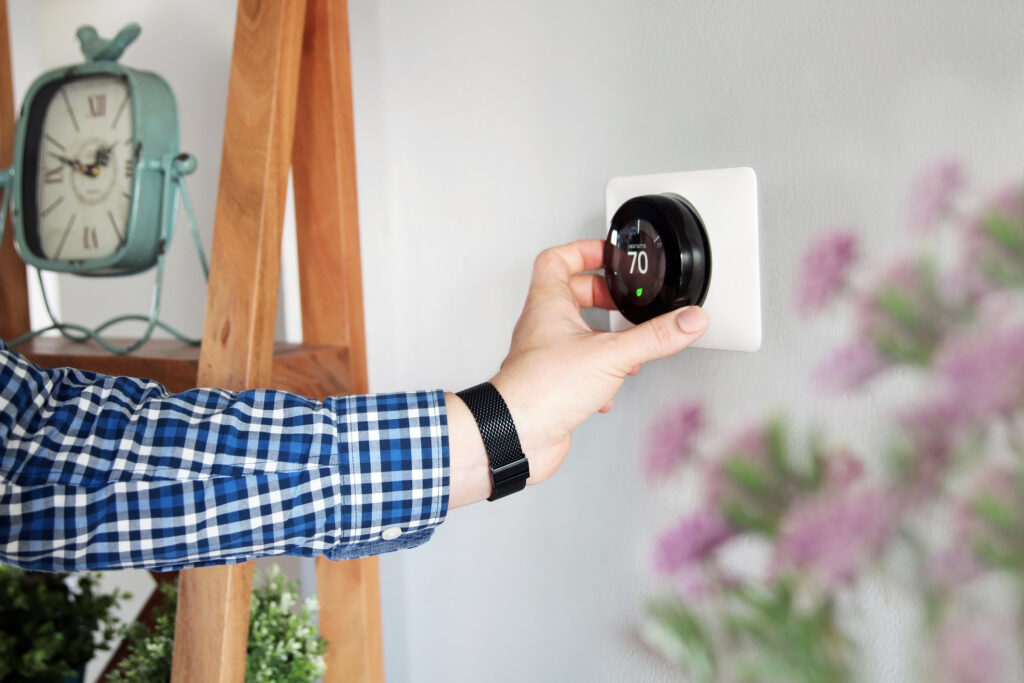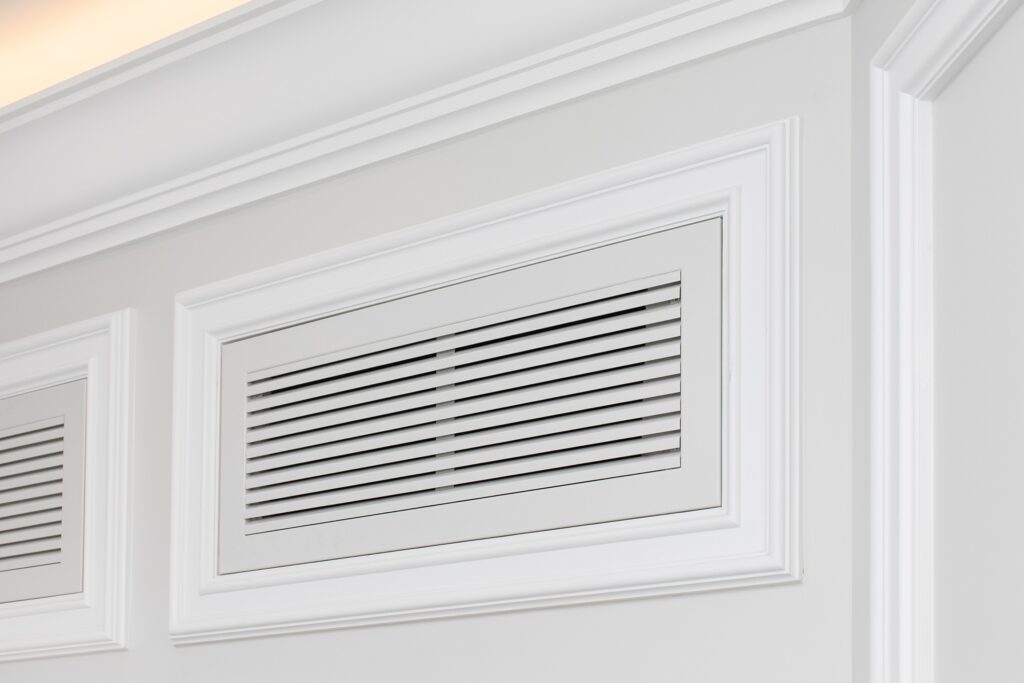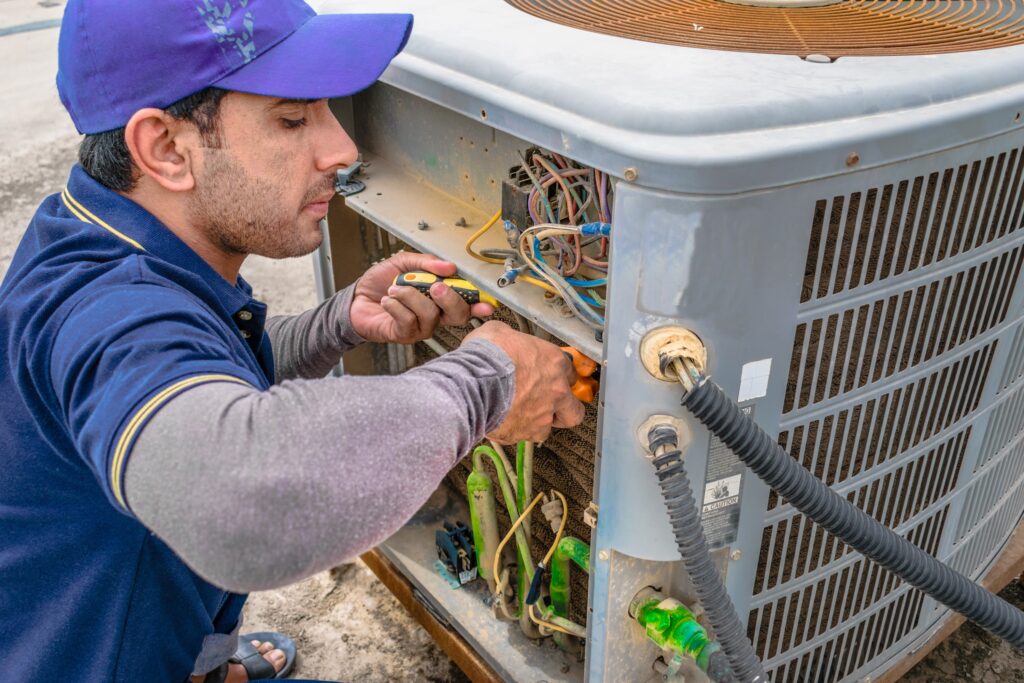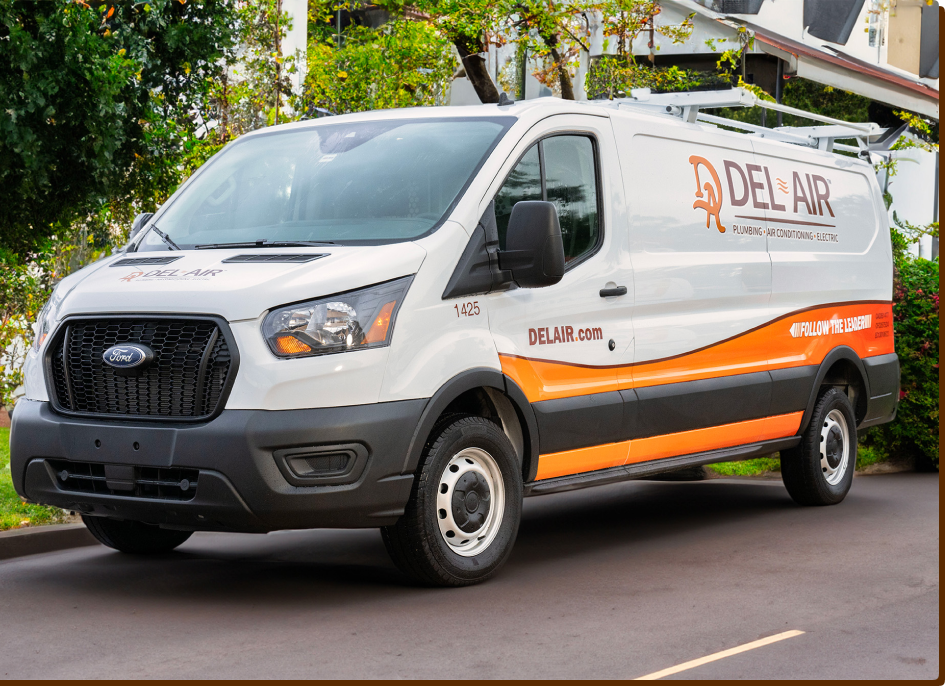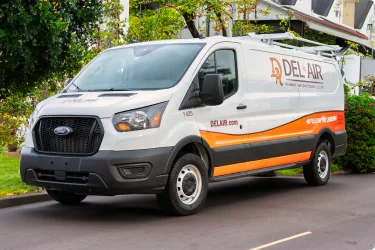Table of Contents
AIR CONDITIONING USAGE IN FLORIDA
People flock to Florida for its beauty and unique way of life that includes such a broad variety of characteristics across the state. Warm winters, sandy Atlantic and Gulf beaches, natural beauty, friendly people, and many other things about the Sunshine State draw residents.
As different as everyone and their lifestyles may be, they all share a few things in common: The heat and a constant quest in the summer to feel cool, yet not break the budget.
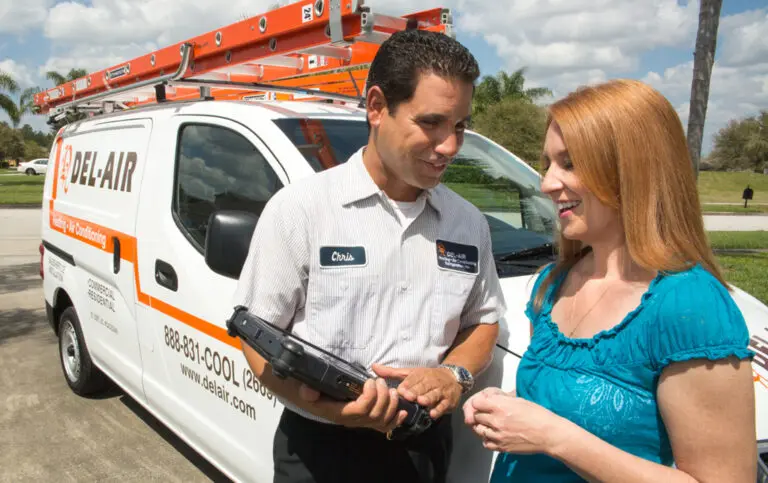
How Much Does It Cost To Run Your AC In Florida?
The cost to run an air conditioner in Florida can present a challenge for any household, and shows up as kilowatt hours (kWh) used per day and per month. Dollars used for cooling a home in Florida can make up a significant part of the home budget.
Some families sacrifice a lot to stay cool during the long summers, and people normally run their systems from April through September. Any Floridian can benefit from a little AC education, because it’s the first step toward a lower electric bill in summer.
Annual electricity expenses in Florida are 40% higher than in the rest of the United States. About 27% of Floridians’ electricity usage is used running their air conditioners, and the annual expense for their electricity in 2009 averaged nearly $2,000. This figure has probably grown since then.
It can literally pay to know your cooling options, what each option entails, how different systems work, average consumption and costs, basic operations, and what is not recommended. Just about all options except for the natural breeze have a cost attached.
AIR CONDITIONER CAPACITY & COST
Air conditioning capacity is measured in tons and BTUs. The word “ton” here hearkens back to when we measured refrigeration in terms of how many tons of ice it could freeze in a day.
BTU stands for British thermal unit, and is a standard expression of an air conditioner’s cooling power. A single BTU is basically how much energy your air conditioner uses to reduce the temperature of one pound of water by 1°F.
One ton is equal to 12,000 BTUs, so you can calculate the cooling power your unit should have. For example, a 3-ton unit would generate 36,000 BTUs of cooling power.
Electricity gives the air conditioning unit the power it needs to generate the cooling BTUs, and how much electricity you’re using is expressed as kilowatts per hour (kWh). To figure costs, you also need to know about amperes, watts, and volts.
- An ampere describes how much electricity is flowing past a certain point.
- Simply put, a volt expresses how much potential energy there is between two points on a wire.
- A watt is one joule of energy per second.
HOW TO CALCULATE AC COSTS
The amount of energy you need depends on many different factors, such as the size and configuration of your home and your personal preferences. It’s possible to do rough calculations of how much energy an air-conditioning system uses and how much it costs.
The same formulas and equations can be used to get specific, too, since your air conditioner should have a label that shows things like amperage, volts, watts, and other factors you need to consider.
You can generally assume these amperage values for purposes of rough calculation: A 4-ton unit = 21 amps, a 3-ton unit = 18 amps and a 2-ton unit = 15 amps.
You can take the amp number and multiply it by the outlet voltage needed to power the system you have. For a central air conditioning unit, a 240-volt outlet would be standard, while for a window-unit air conditioner, a 110-volt outlet would be used. Once you know the amps and volts, you can figure out the watts.
Using a 3-ton air conditioner for the equation: 18 amps x 240 volts = 4,320 watts.
The kilo in kilowatt stands for 1,000, so you divide that into the number of watts to get the number of kilowatt hours: In this case, 4.32.
Estimating Your AC Costs In Florida
If you’re interested in estimating what your bill could or should be based on your system’s capacity, you can multiply the number of kilowatt hours by your provider’s price per kWh. For Florida, you can count on somewhere around 11 cents per kWh.
Following the example so far: 4.32 kWh x 11 cents per kWh= 48 cents per hour to run the air conditioning unit. Multiply that by 24 to figure how much it would cost for a day, but keep in mind that the number represents continuous operation.
.48 x 24 = $11.52 per day (for continuous operation)
Multiply the daily cost by 30 to get the monthly cost: $11.52 x 30 = $345.60. A multiplier can account for how often your air conditioner will actually run, since most don’t run 24 hours a day.
Assume an indoor temperature of 70°F, that the system is properly sized, and that the nighttime temperature probably drops by 20°F, and then use the following multipliers depending on the average temperatures in your area:
- 90 degrees = multiplier of 0.3
- 100 degrees = multiplier of 0.4
- 110 degrees = multiplier of 0.8
When average outdoor temperatures are 100°F and indoor temperatures are around 70°F, the equation looks like this: $345.60 x 0.4 = $138.24 per month.
You can also do your own in-home data collection by actually clocking the AC unit for two separate hours: Once in the heat of the day and once in the cool of the night. Basically, it’s a count of how many times it comes on in an hour and how long it runs each time, which produces numbers that enable you to average the operative hours and calculate the daily, monthly, or yearly expense of your air conditioning bill during summer in Florida.
YOUR CHOICES FOR AIR CONDITIONING SYSTEMS IN FLORIDA
A central air conditioning system conditions the air and delivers it through vents throughout your home. It’s the most effective, but also the most expensive. A central air system uses the most electricity, but does the cooling job most effectively, as evidenced by the fact that 86% of people who live in Florida use central AC to cool their home.
Zoned HVAC Systems
Some of the latest developments include zone cooling, which means you can have different temperatures in different rooms and everyone gets their way with the thermostat. In general, a central air system used for eight hours a day for a month will use approximately 857 kWh.
Window Air Conditioners
A window-unit air conditioner also conditions the air and blows it straight into the room from the window where it’s placed. There are other systems and models available, such as ductless systems that mount through an outside wall and have a compressor/condenser outside and a blower inside.
A 9,000 BTU/hour window-unit air conditioner that runs for approximately eight hours per day will use about 321 kWh in a month.
Evaporative Coolers
Evaporative coolers use water-soaked material to cool air blown across it by a huge fan that delivers cooled air through a series of ducts or air pipes.
The “swamp cooler” has evolved to come in models that address indoor humidity concerns, including indirect and hybrid coolers, but most still rely on a water evaporation process that tends to work better in dry climates than in humid ones.
It undoubtedly adds humidity to the air, but does have significant cooling power for a fraction of the cost of other options. Some people prefer to have a little extra humidity and save more money in the long run.
An array of fans available will create air flow and aid cooling:
- Attic fans mounted strategically draw air up and out through rooftop vents.
- Box fans normally sit on the floor or another surface and propel the air behind them forward at varying speeds, sometimes with a reversal option.
- Ceiling fans of course mount to the ceiling, and usually have a reverse switch for if, and when, the furnace is running.
- Cupulas are a kind of fan common in older Florida homes, and they draw air upward and push it out the windows.
- Window fans sit in the frame of a window and can usually either draw air out of a room or push air in from outdoors.
- Pedestal fans sit on a pole with the fan blades and motor at the top. They typically offer varying degrees of power and air projection.
- Oscillating fans are usually in the form of a pedestal fan that makes a back-and-forth sweeping motion.
Every Floridian has a different tolerance level for the heat and a different preference for if, or when, air conditioning is needed. Nevertheless, most would likely agree that it feels good on the days that hover near the 100-degree mark and during hot, humid nights.
You can move a lot of air with fans and perhaps get a home to a comfortable temperature. The upside is that fans are the least expensive air cooling option. A typical fan set on medium and running constantly would probably use only about 31 kWh per month.
DIY AC OPTIONS MAY DISAPPOINT
Families, friends, and neighbors inevitably compare notes about the Florida heat and the many creative ways in which people try to beat it cheaply. The truth is, most homemade solutions do little to condition the air and remove the notorious humidity that goes along with the heat of the Sunshine State.
For example, one of the popular do-it-yourself solutions includes using an ice chest full of ice with holes in the lid for an exhaust and a fan. Sure enough, cool air blows from the cooler, but the ice doing the job adds even more moisture to the air and can actually make the room hotter because of the additional humidity.
HOME DESIGN TIPS TO STAY COOL
When building new or considering a modification to your home, thoughtful design can add quite a bit of comfort to a building, since the orientation and other physical aspects of a home can impact its interior temperature.
It’s common to see Florida homes designed with features like a long, east-west breezeway; windows up high and down low; and bigger roof overhangs for more shade.
Experts avoid the use of asphalt or concrete directly outside of exterior windows, because the material generates heat that transfers. Many people build with or get a heat-reflective roof that bounces heat away instead of absorbing it.
If you have skylights, it helps to install a shade along with them so they create the desired light without any unwanted heat. A solar tube is a similar option that allows in less light but also generates less heat.
Shade trees, south-facing windows, and solar panels are other ways people try to work with nature to reduce the cost of cooling. You’re likely to see these features incorporated into the designs of many older homes built before air conditioners became common, as well as more modern homes where design eases the burden on the AC unit.
If you’re planning a new build or getting a new roof, you should know about radiant barriers. They’re a foil-like layer that goes underneath the roof shingles to deflect heat.
AC EFFICIENCY SAVES MONEY
Most people think the most important priority is to have the air conditioning system working to the point that they feel cool and comfortable. That might be true, though dollar-wise, the system’s operational efficiency is the most important priority, and there are many factors that create points of inefficiency:
- Age can cause system failure, and an AC system should be replaced if it’s 15 years old or more, since you can make up for the cost of a new system with the money you save in efficiency.
- Poor maintenance results in a short life and more potential problems from clogs or wear and tear. Save money and headaches with a yearly inspection and service in the spring, before the busy season hits.
- Rodents and other pests invade and chew at or otherwise affect the system.
- Weather and Florida’s salty air work their way through parts quickly.
- An undersized central air compressor for the space creates inefficiency.
Many of these are factors that affect the proper functioning of your system, as well as the bottom line on your electric bill and kilowatt usage. The objective with efficiency is to get the maximum amount of cooling for the least amount of energy.
You can check out the seasonal energy-efficiency ratio (SEER) of the system you have or may get, as that gives a measure of its efficiency — specifically, how much cooling power it delivers for each kilowatt used. For example, if the system was a 10, it would deliver 10,000 BTUs of cooling power per kilowatt. Efficiency translates directly into fewer dollars spent on a summer air conditioning bill in Florida.
SMALL MEASURES ADD UP TO BIG SAVINGS
The main objective in the Florida summer is to keep the cool, conditioned air inside and the heat and humidity outside. It degrades system efficiency when the conditioned air escapes or outdoor air enters, and an inefficient system can cost you more money on your bill than you realize.
There are a number of steps you can take toward better efficiency:
- Inspect and properly maintain the system each season to keep it in peak operating condition and not only save money on the bill, but also the possible costs, headaches, and discomfort that results from an AC system failure.
- Change the system filter regularly, such as monthly or every other month, to avoid having the system clog up with the fine particulates and other materials. A clean filter improves air quality and protects your system.
- Install a programmable thermostat that adjusts the temperature automatically. For example, you could allow the house to heat up a few degrees while you’re at work, and then cool back down before you arrive back home. It’s estimated that a programmable thermostat can save about $180 per year in energy costs, which could fluctuate among households.
- Consider zoned cooling, which is basically a room-by-room programmable thermostat with one multi-zone controller. You can manipulate the air space-by-space to have different temperatures in different rooms at different times. The system works via dampers on the air ducts or a ductless air handler.
- Add insulation to augment AC efficiency for both summer and winter, since the material works to keep hot air out and cool air in. Attics are one of the main ways heat enters homes in Florida, since the roof typically generates quite a bit. Several varieties of foam insulation are recommended in the state to help counteract both heat and moisture.
- Mount insulated windows and doors to lock moisture and heat out and retain cool, conditioned air inside. Florida’s building codes call for ones that are moderately resistant to the unwanted elements, but there are options to beef up whatever you have, such as film coatings, shades, sealants, and shutters.
- Seal any gaps that exist between the indoors and outdoors to boost efficiency and lower your bill. Typical problem areas are doors, windows, and their thresholds, as well as anywhere there’s a connection to the outside, such as plumbing or electrical fixtures. Silicone caulk or sealant is widely available to help with such jobs.
- Assess the ductwork, since in central air conditioning systems, that’s the route of travel your cool air takes. Any air lost on the way affects your comfort and your bill: For example, if a seam loosens or malfunctions. Ducts usually run through the ceiling and/or floor, in the attic, above the garage, and in other configurations.
- Use the exhaust fan during and after showers to help dehumidify the bathroom. That fog we produce in a hot shower is precisely the kind of humidity your air conditioner is working to remove. It helps to occasionally check the exhaust fans to see if they’re working right. Basically, if the fan suction holds a facial tissue up, it’s probably fine. If the suction is weak, it could indicate a problem such as an inadequate fan motor.
- Clean the dryer vent and hose regularly, inside and out. You can do this each or every other time you vacuum or clean. Lint buildup is not only a dangerous fire hazard, but can also force hot air back into your home and make the AC work harder.
TURN TO A FLORIDA EXPERT
When you’re ready to repair, replace, install, or maintain any kind air conditioning or cooling system, Del-Air Heating & Air Conditioning provides a full range of HVAC services. We can help with troubleshooting, inspections, upgrades, and efficiency improvements.
We sell and service every major HVAC system produced. We have expert technicians ready to deliver prompt, courteous service at competitive prices. We can provide a quote in as little as 10 minutes, along with next-day installation of the quoted system.
Florida is a big, hot state and we have the resources to manage that and keep you comfortable. Since Del-Air sells and services all major AC brands, we’re able to offer customers whichever system best suits their individual needs.
It’s pretty difficult to accurately answer the question, “How much should a Florida air conditioning bill cost in the summer?” Everyone’s response will be a little different depending on what part of Florida they live in and their indoor temperature preferences.
Collecting some statistics on your system will not only help you track down problems, but also establishes a benchmark that helps you keep a watchful eye on your usage and costs. If anything changes for better or worse, the data will help you know it.
When you need air conditioning services, give us a call or reach out online.


